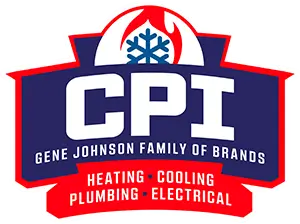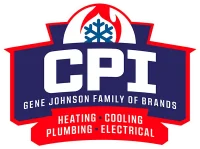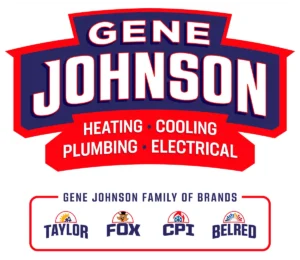The Pros and Cons of Different Types of Pipes
Here at CPI Plumbing, Heating, Cooling & Electrical, we’ve worked with just about every kind of plumbing pipe you can imagine—from century-old cast iron pipes to cutting-edge PEX pipes. Whether you’re building new, remodeling a bathroom or a kitchen, or dealing with aging pipes that need a full replacement, it helps to understand your options. Each pipe material has its own strengths and weaknesses, and what’s best for one job might not work well for another. If you’ve ever found yourself wondering what makes copper pipes different from PVC pipes (and which ones actually belong in your home), this guide will clear the air.
Let’s break down the pros and cons of the most common types of plumbing materials used in today’s plumbing systems.
Copper Pipes
Pros: Copper pipes have been the gold standard in plumbing for decades, and for good reason. They offer excellent corrosion resistance, especially when transporting drinking water, and they don’t leach harmful chemicals into your supply. Copper is also incredibly heat resistant, making it a great choice for hot water lines and heating systems.
Cons: The biggest downside? Cost. Copper is expensive, both in material and labor costs. It also requires specialized tools and skills, making it less ideal for DIY plumbing projects. In areas with highly acidic water, copper can slowly corrode from the inside out.
PEX Pipes (Cross-Linked Polyethylene)
Pros: PEX pipes are the darling of the modern plumbing world—and for good reason. They’re flexible, which means fewer fittings are needed, making them quicker and cheaper to install. They’re great for hot and cold water, resist freezing better than other materials, and are ideal for tight or awkward spaces.
Cons: While durable, PEX doesn’t perform well when exposed to UV light, so outdoor or direct sunlight installations are a no-go. Some older homes might have compatibility issues if tying into existing systems, and there are lingering concerns about long-term chemical leaching in certain applications.
PVC Pipes (Polyvinyl Chloride)
Pros: PVC pipes are lightweight, inexpensive, and incredibly easy to work with. That’s why they’re widely used in drain lines, main sewer lines, and underground installations. They’re also corrosion resistant and don’t rust, unlike some metal pipes.
Cons: You’ll typically find PVC used in cold water and drainage—not hot water lines. That’s because PVC can warp or degrade under high temperatures. They’re also rigid and don’t offer much flexibility for snaking around tight corners or odd-shaped spaces.
CPVC Pipes (Chlorinated Polyvinyl Chloride)
Pros: Think of CPVC as PVC’s tougher cousin. It’s chemically treated to handle hot water, so it’s more suitable for hot and cold applications in residential plumbing. It’s still relatively affordable and easy to cut and join.
Cons: CPVC pipes are more brittle over time, especially if exposed to direct sunlight or major temperature fluctuations. It also expands and contracts more than other plumbing materials, which can cause long-term stress on joints and fittings. Compatibility with other pipe types can also be tricky.
Cast Iron Pipes
Pros: If you’ve ever owned or remodeled an older home in the area, you’ve probably seen cast iron lines. These iron pipes are incredibly durable and offer fantastic noise reduction—they’re great at muffling the sound of running water or flushing toilets. They’re still used in some drainage systems and industrial systems.
Cons:They’re heavy, difficult to cut, and require serious muscle (and equipment) to install or remove. Over time, cast iron pipes are prone to rust and internal buildup, leading to clogs and slow drains. They’re also more expensive to repair or replace, especially if buried under concrete or flooring.
Galvanized Steel Pipes
Pros: Once a staple in mid-century homes, galvanized steel pipes were used for everything from water supply lines to interior plumbing. They’re tough, strong, and—when new—fairly corrosion resistant thanks to their zinc coating.
Cons: Here’s the problem: that zinc coating doesn’t last forever. As it wears down, galvanized pipes start to corrode, flake, and clog. You might notice brownish water or reduced water flow if you have aging pipes made from galvanized steel. In fact, they’re no longer approved by many local building codes due to their poor performance over time.
Stainless Steel Pipes
Pros: Stainless steel pipes are sleek, durable, and resistant to both rust and chemical corrosion. They’re ideal for areas exposed to salty air or high-moisture environments and are used in both residential and industrial systems.
Cons: They come at a high price—more expensive than copper in many cases. Plus, they can be difficult to work with and may require threaded fittings or welding, which makes them less practical for small-scale or DIY plumbing jobs.
Clay Pipes
Pros: You might be surprised to learn that clay pipes are still in use—especially in older sewer lines. They’re naturally corrosion resistant and can last an incredibly long time under the right conditions. Plus, they’re made from natural materials, so they’re eco-friendly in a sense.
Cons: They’re brittle and prone to cracking under pressure, especially from root intrusion. They’re rarely used in modern plumbing systems due to their fragility and the rise of more flexible, cost effective materials like plastic pipes or polyvinyl chloride PVC.
What Are the Top Pipe Choices for Western Washington’s Homeowners?
In Western Washington, we deal with a unique mix of weather, water quality, and construction styles. From moisture-rich air to chilly winters and older housing stock, the right pipe material can make all the difference in the efficiency, durability, and installation costs of your next plumbing project.
For many homeowners around Mount Vernon and the surrounding areas, PEX pipes are a top pick. Their ease of installation, flexibility, and ability to handle freezing temperatures without bursting make them ideal for our climate. They also work well in remodels where pipes need to be snaked through walls or under floors.
Copper pipes are still widely respected for their safety, heat resistance, and durability—especially in homes with hot water recirculation or radiant heating systems. However, due to higher costs, they’re often used selectively or in premium builds.
For drain lines and sewer lines, PVC pipes or upgraded CPVC pipes are reliable, cost effective, and stand up well to local soil conditions. We also occasionally encounter older cast iron pipes in historic homes that need evaluation or replacement.
When it comes to choosing the best plumbing material for your home, it’s not about what’s “newest”—it’s about what works best for your plumbing system, lifestyle, and long-term goals.
Thinking of Repiping Your Home? Call CPI!
If your home has aging pipes, poor water pressure, or rusty tap water, it might be time to take a closer look at your home’s plumbing system. At CPI Plumbing, Heating, Cooling & Electrical, we help Mount Vernon homeowners understand their options, compare different pipe materials, and plan out repiping solutions that are efficient, safe, and built to last.
Our experienced technicians are trained in working with metal pipes, plastic pipes, and everything in between. We’ll evaluate your current setup, walk you through choices like PEX, copper, and CPVC, and give you honest advice based on your home’s needs—not a sales pitch.
Give us a call today or contact us online to schedule your plumbing consultation. We’ll help you get back to consistent water flow and reliable plumbing materials, with expert service and local experience you can trust.


